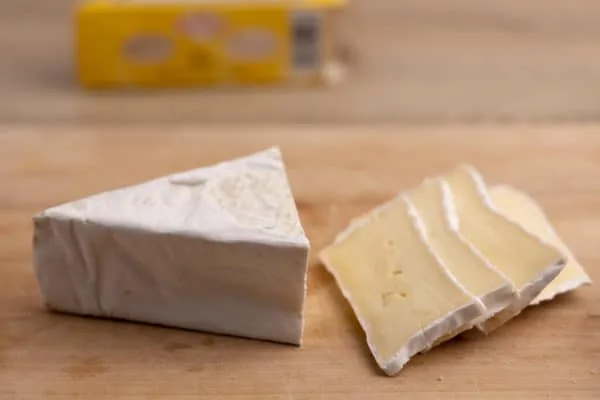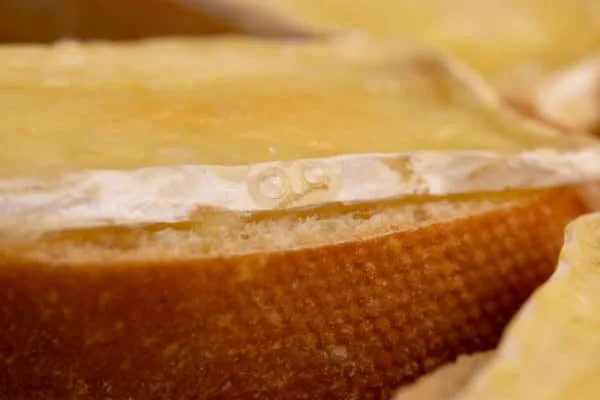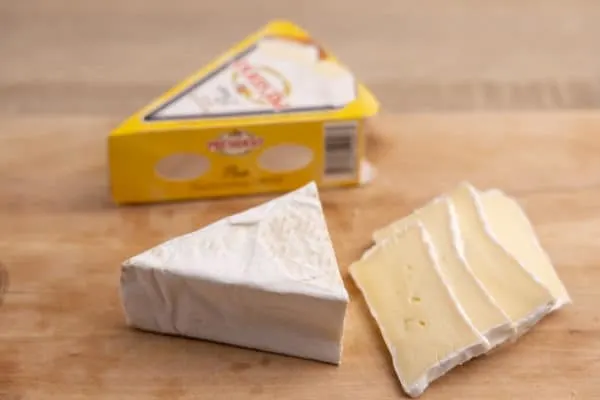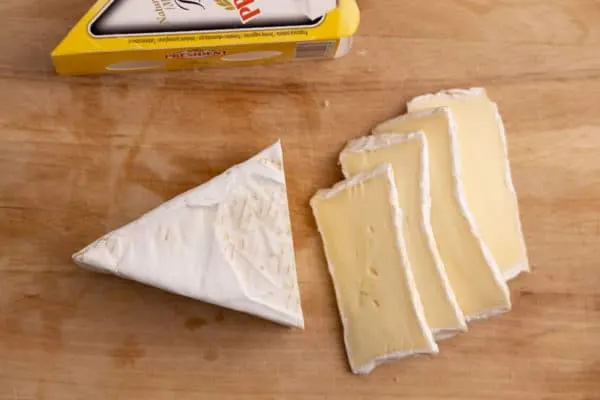Here’s all about the shelf life and spoilage of brie cheese. Learn how long brie cheese lasts and how to tell if it’s bad.
Say you got an extra wheel of brie in the fridge that didn’t make it to the cheese platter. And since the printed date is approaching soon, you’re wondering: how long does brie last?
Or maybe yours has been in the fridge for quite a while, and you want to make sure it’s still okay to eat. Therefore, you need to know what spoilage signs to look out for.
Sounds like you?
If so, this article is for you. Read on.

Table of Contents
- Does Brie Cheese Go Bad?
- How to Tell if Brie Is Bad?
- How Long Does Brie Cheese Last?
- How to Store Brie
- Freezing Brie
Does Brie Cheese Go Bad?
All types of cheese eventually go bad, and brie is no different. It’s a soft cheese, so it has a fairly limited storage time of several weeks, and its flavor gets sharper as it ages. After a couple of weeks past the printed date, it typically becomes too sharp to eat.
That super-sharp brie isn’t spoiled in the usual meaning of the word, but it’s no good if it’s super sharp and intense.
That said, flavor change isn’t the only way brie goes bad. There are a couple of spoilage signs to look out for. Let’s talk about them.

How to Tell if Brie Is Bad?
Your brie is bad if there’s mold that’s not native to the cheese, the color of the rind has changed, it has a strong smell that doesn’t subside after a few minutes, or it tastes too sharp or pungent. Also, if it’s more than a few weeks past the printed date, it’s likely no good either.
Those are the typical signs of spoilage for brie cheese. Next, let’s talk about them in more detail.
First, inspect the rind of your brie. The bloom should be mostly white and powdery in appearance. If the rind seems overall gray or flaky, the cheese has likely started to spoil and should not be consumed.
While some darker spots here and there are fine, if there’s any mold not native to the cheese present, you should discard the dairy product.
A slight ammonia smell does not indicate that the cheese has spoiled, and is a natural byproduct of the cheese aging process. Let the cheese air out for a few moments and give it another whiff.
If the rind still has a slight smell, but the paste (the inside that’s under the rind) smells nice and creamy, it’s fine to eat. But if the whole piece still smells strongly of ammonia after a few minutes, the cheese has probably turned.
Trust your nose – if the cheese smells really bad to you, then it’s probably not good to eat.

Finally, we’ve got taste and texture.
As brie ripens, its center turns creamier (or more gooey), and the flavor sharpens. It’s a welcome change if you like your brie more flavorful, but only to a certain point. Sooner or later, the taste becomes too intense, and that’s when your brie is done for.
At this point, the cheese shouldn’t be particularly harmful to consume in terms of pathogens (the natural mold on the rind inhibits the growth of most other organisms), but the taste may be too strong and could cause digestive discomfort.
Again, trust your senses here.
Besides regular brie, some heavily aged varieties are also available. These tend to be darker and taste much sharper. If you’ve bought one of those, an intense flavor is what you expect, not a sign of spoilage.

How Long Does Brie Cheese Last?
An unopened wheel or wedge of brie keeps quality for 1 to 2 weeks past the printed date. After opening, brie cheese retains best quality for 1 to 2 weeks if you wrap it tightly using its original wrapping, cheese paper, or wax paper.
(That 1 to 2 weeks period beyond the printed date is pretty conservative. Some sources say brie can last for up to 4 weeks after the sell-by date.)
As I already mentioned, the longer you store brie, the sharper and more flavorful it gets. So if you like yours on the milder side, enjoy it as soon as possible.
But if you’re okay with it having a more intense flavor, it’s better to postpone eating it until it’s near the printed date or even past it. As long as there aren’t any spoilage signs that I discussed in the section on going bad, you can eat brie that’s more than a couple of weeks “expired.”
Overall, brie lasts quite a while for a soft cheese, and its storage time is quite similar to that of cream cheese, even though the latter is a fresh cheese and brie is matured.

How to Store Brie
Wrap your leftover brie tightly using the original wrapping and place it in the fridge when not in use. If you can’t use the original wrap, cheese or wax paper are your best alternatives.
Brie needs to breathe to retain quality, and that’s why simply reusing the original wrap is the best storage option. That wrap is, most likely, covered with tiny holes that allow the mold to breathe and thrive.
(The same works when storing blue cheese.)
The cheese should be kept in the cheese drawer of your refrigerator, where the moisture and temperature remain relatively constant. If you don’t have one, keep the cheese in the back of the fridge if you need it to last a long time.

Freezing Brie
Because of how the texture of brie changes, freezing the cheese is not recommended as a long-term storage option, unless you plan on baking or cooking the cheese in another dish.
To achieve the best texture, it’s best to cook a recipe that will include the brie, like a brie en croute or a quiche, and freeze the dish before baking.
Previously frozen brie will also make fabulous grilled cheese!

No matter what the final application is, be sure that you thoroughly wrap the cheese. You may then either place the wrapped piece of brie in an airtight container or aluminum foil to keep any air out.
Brie will keep in the freezer in good quality for up to six months.
If using the frozen brie in a grilled cheese sandwich, you don’t need to defrost it completely. An hour or two in the fridge is usually enough. At this point, the cheese should be just soft enough to slice it and place on the bread.
Alternatively, you can freeze your brie sliced. This way, you can add it to the cooked dish right from the freezer.
Once frozen brie has been thawed, you shouldn’t refreeze it unless you’ve defrosted it in the fridge and it didn’t sit at room temperature.